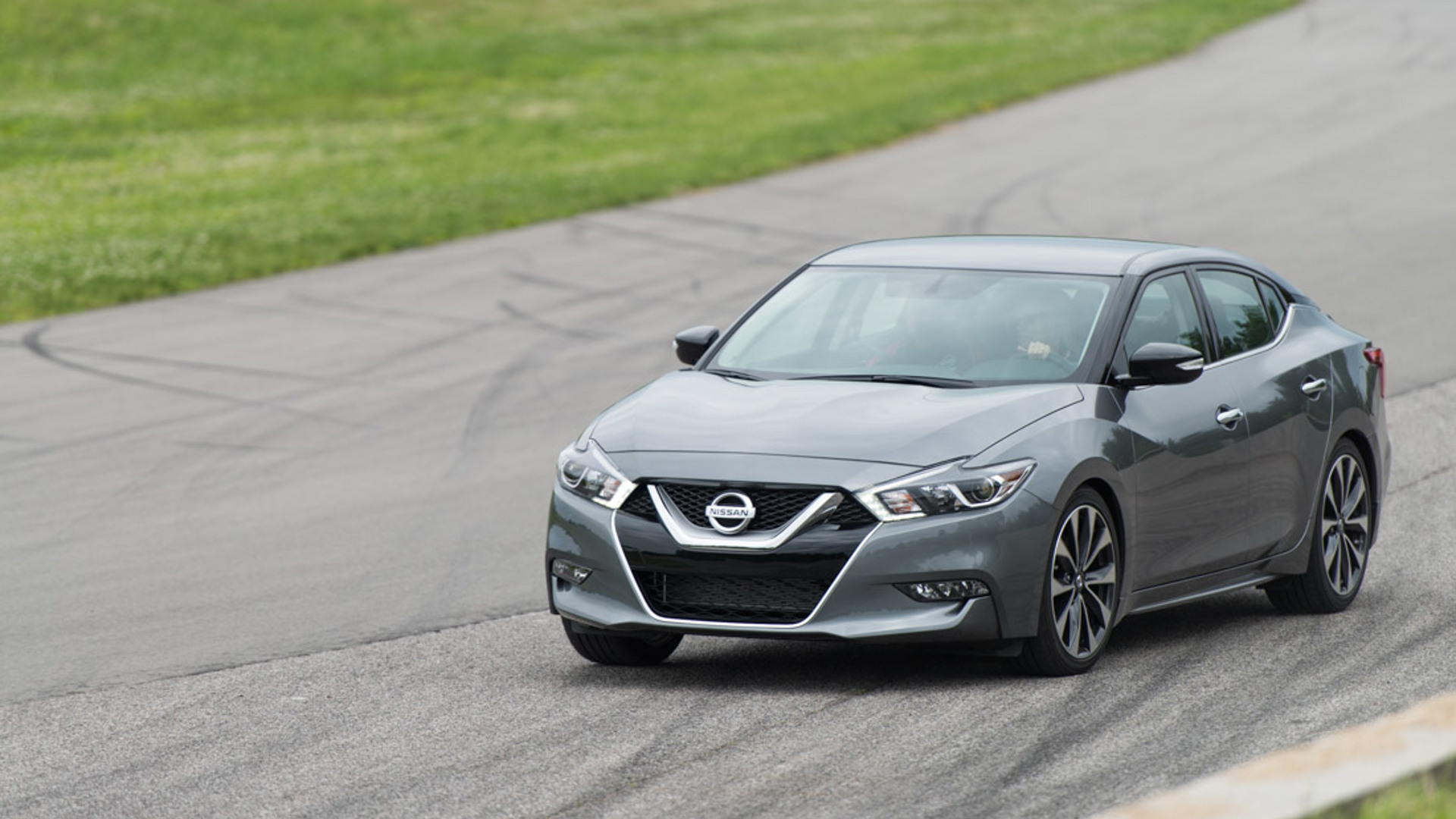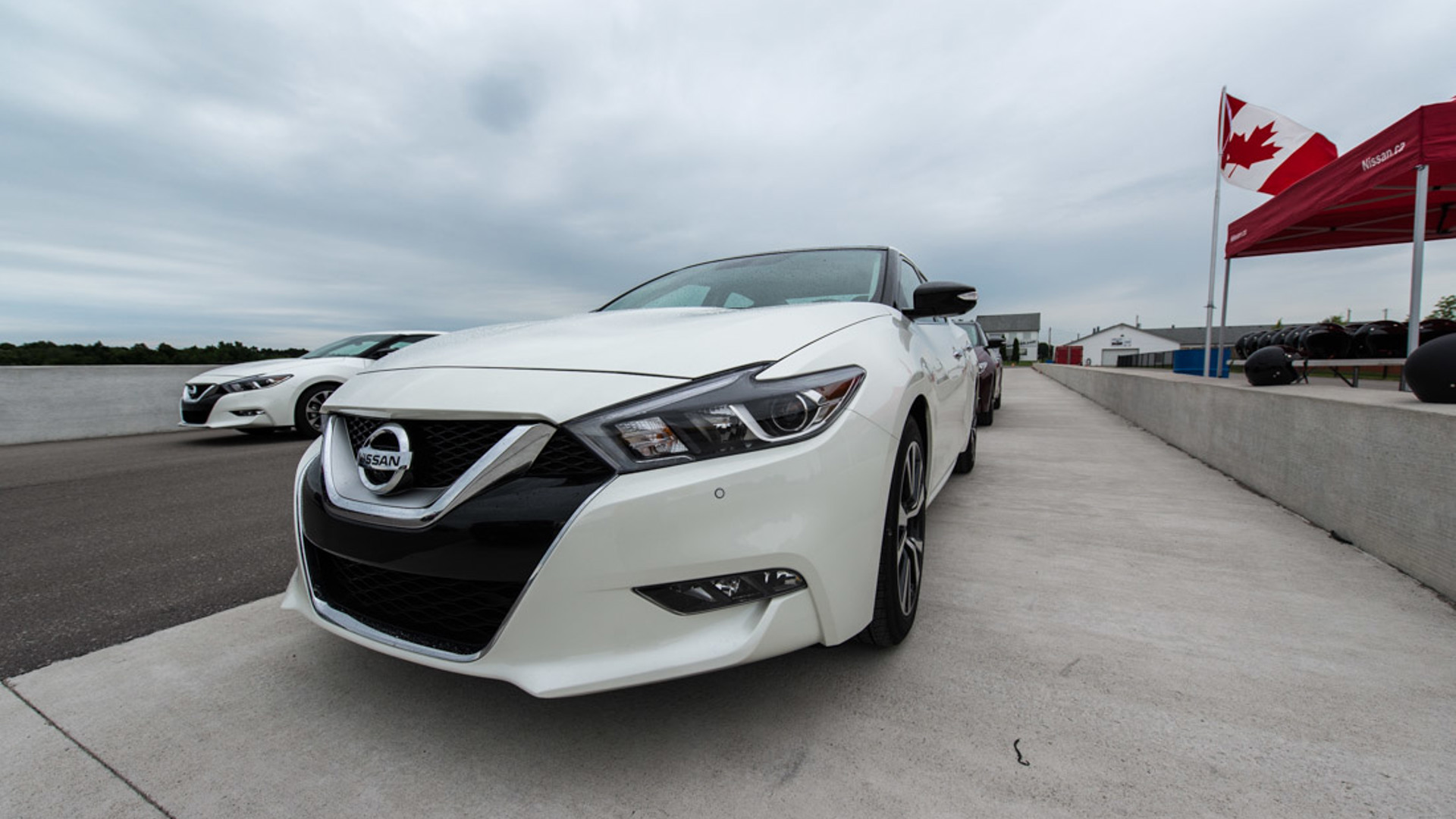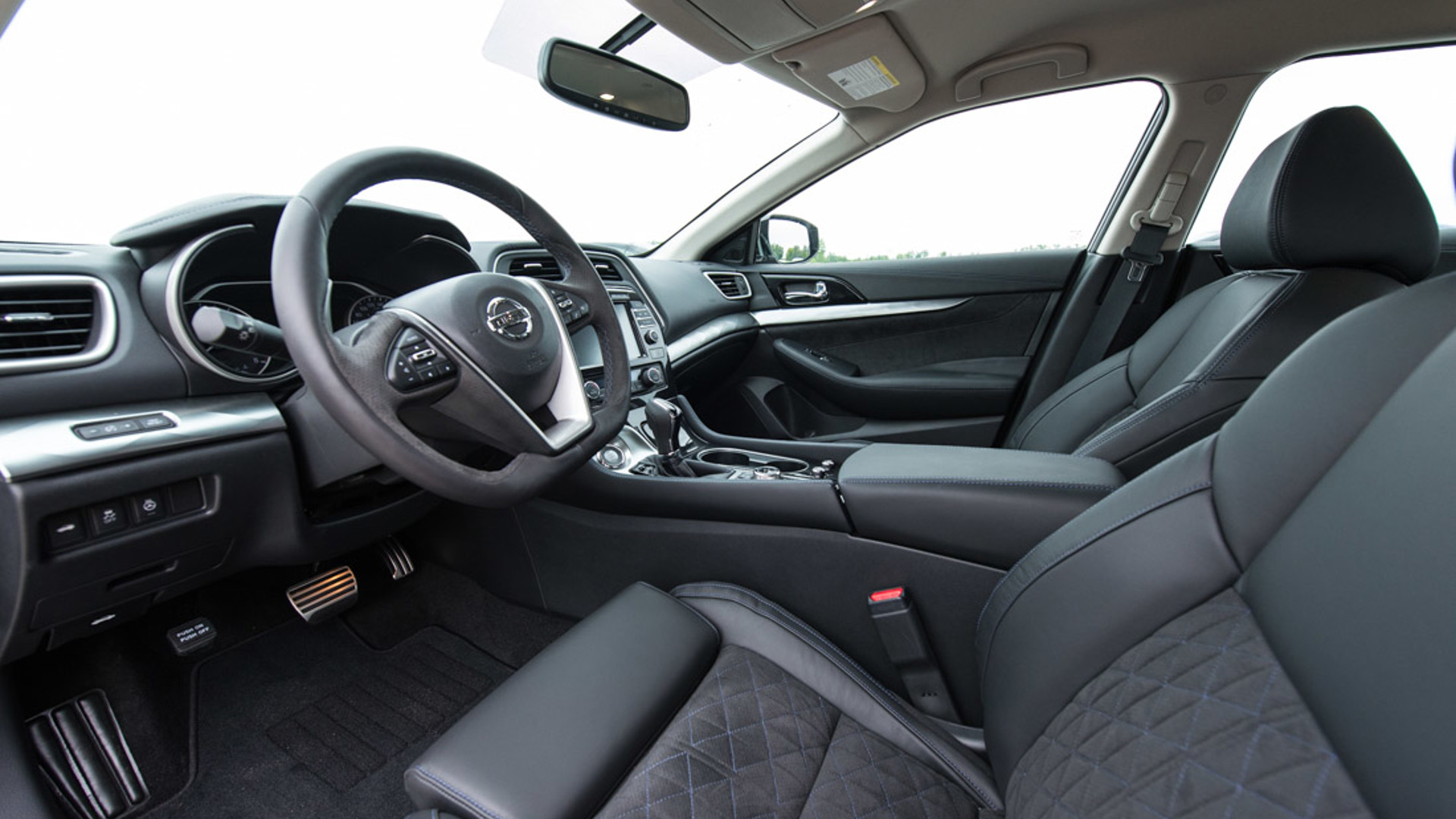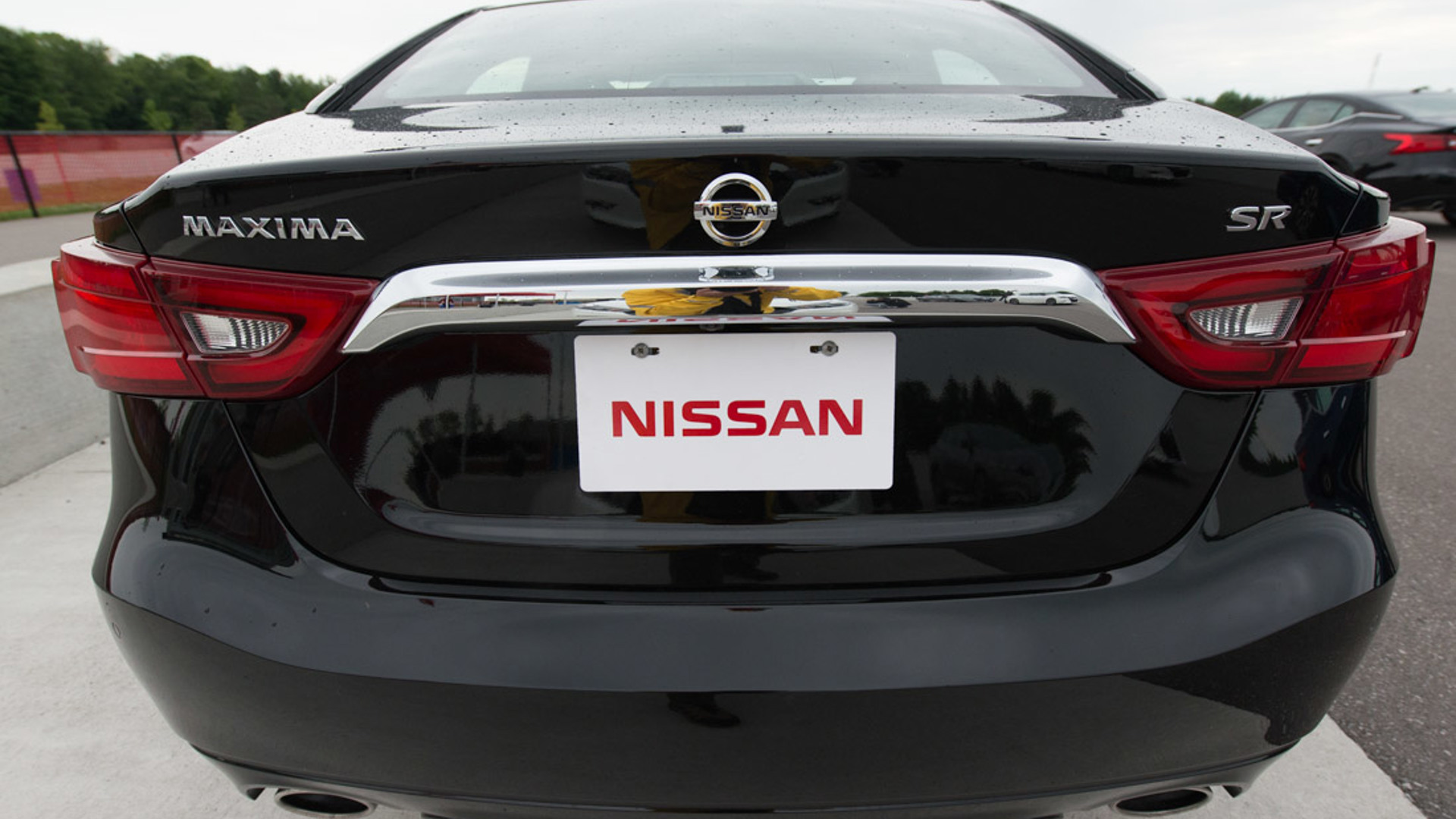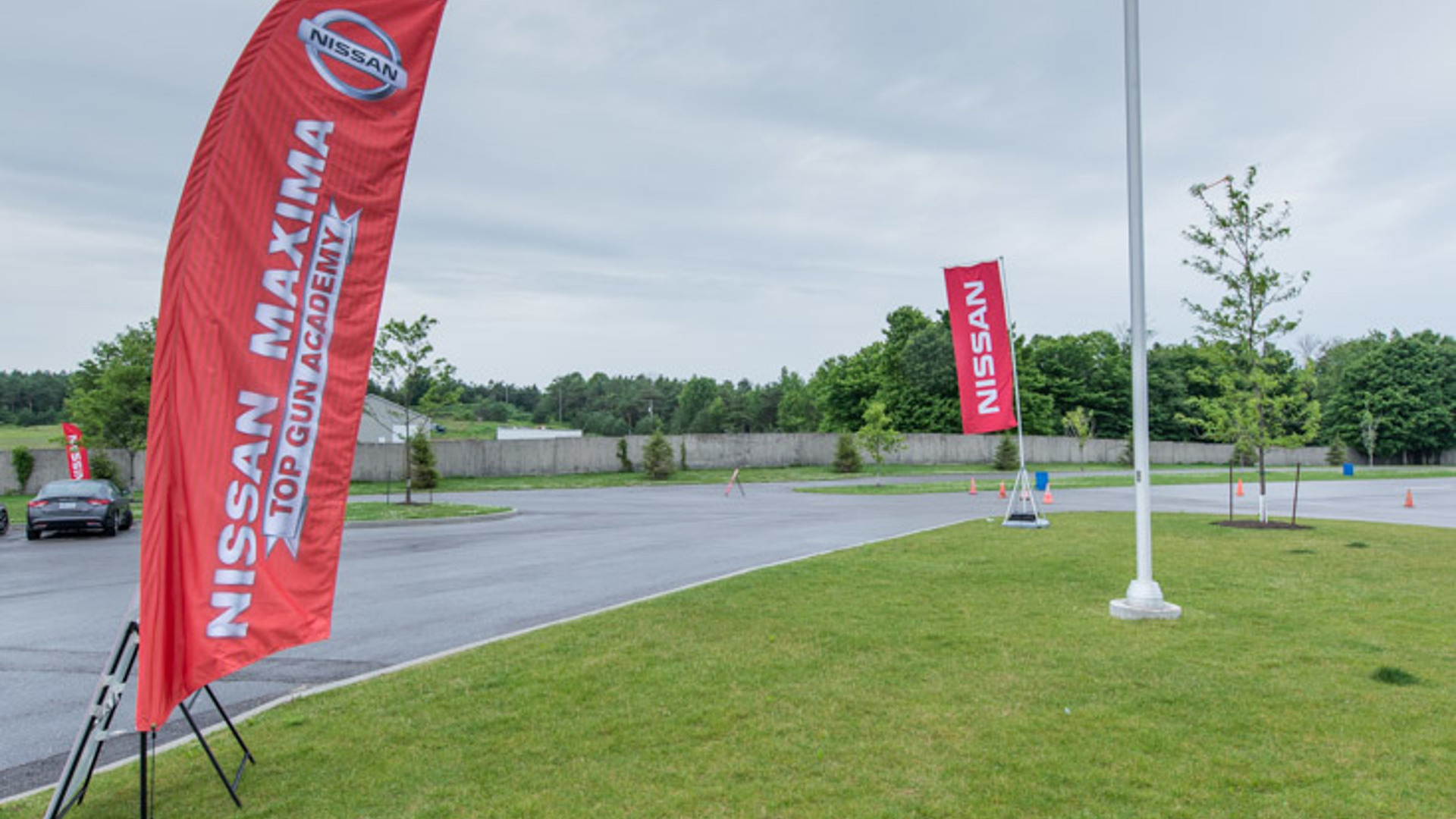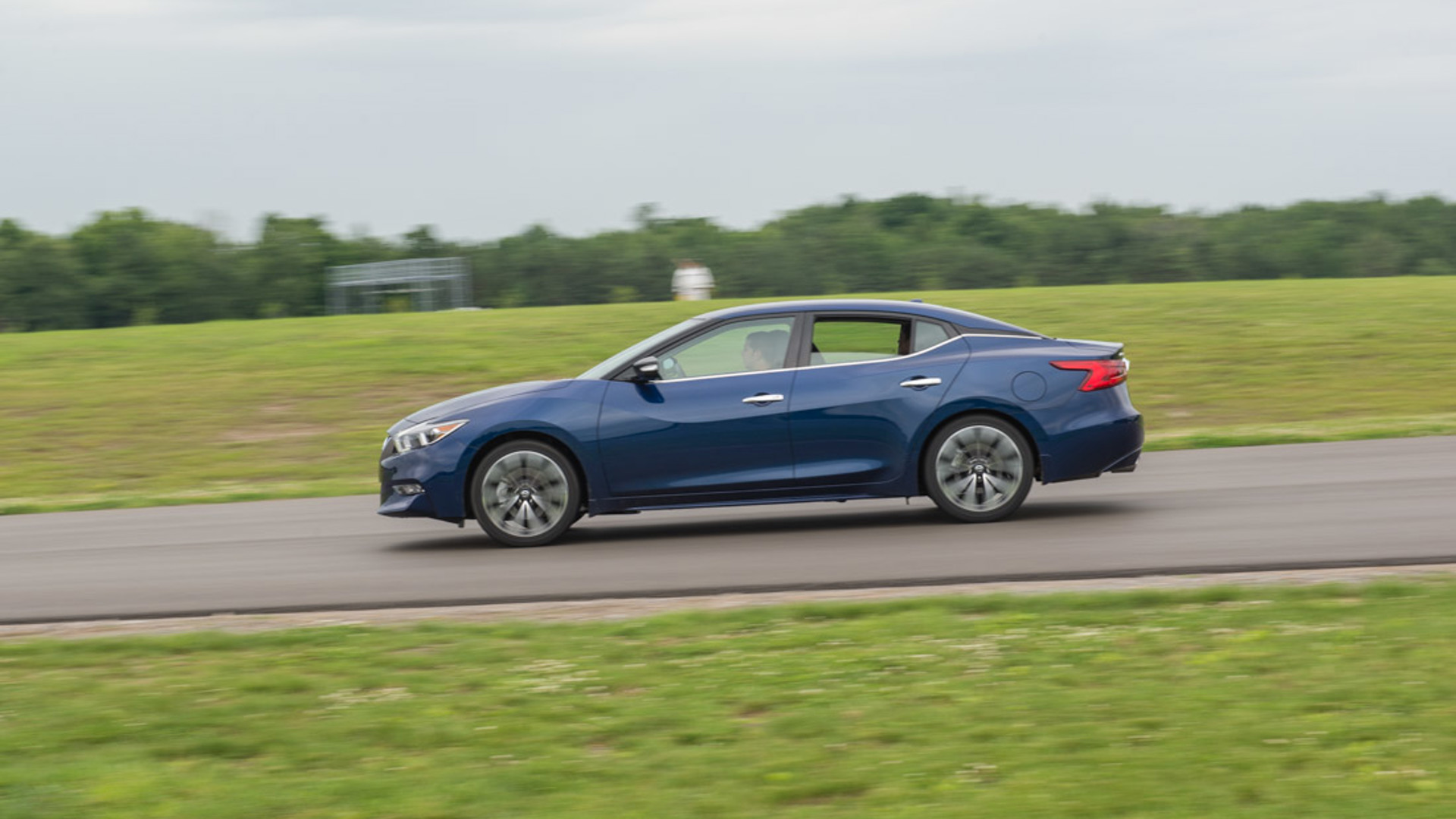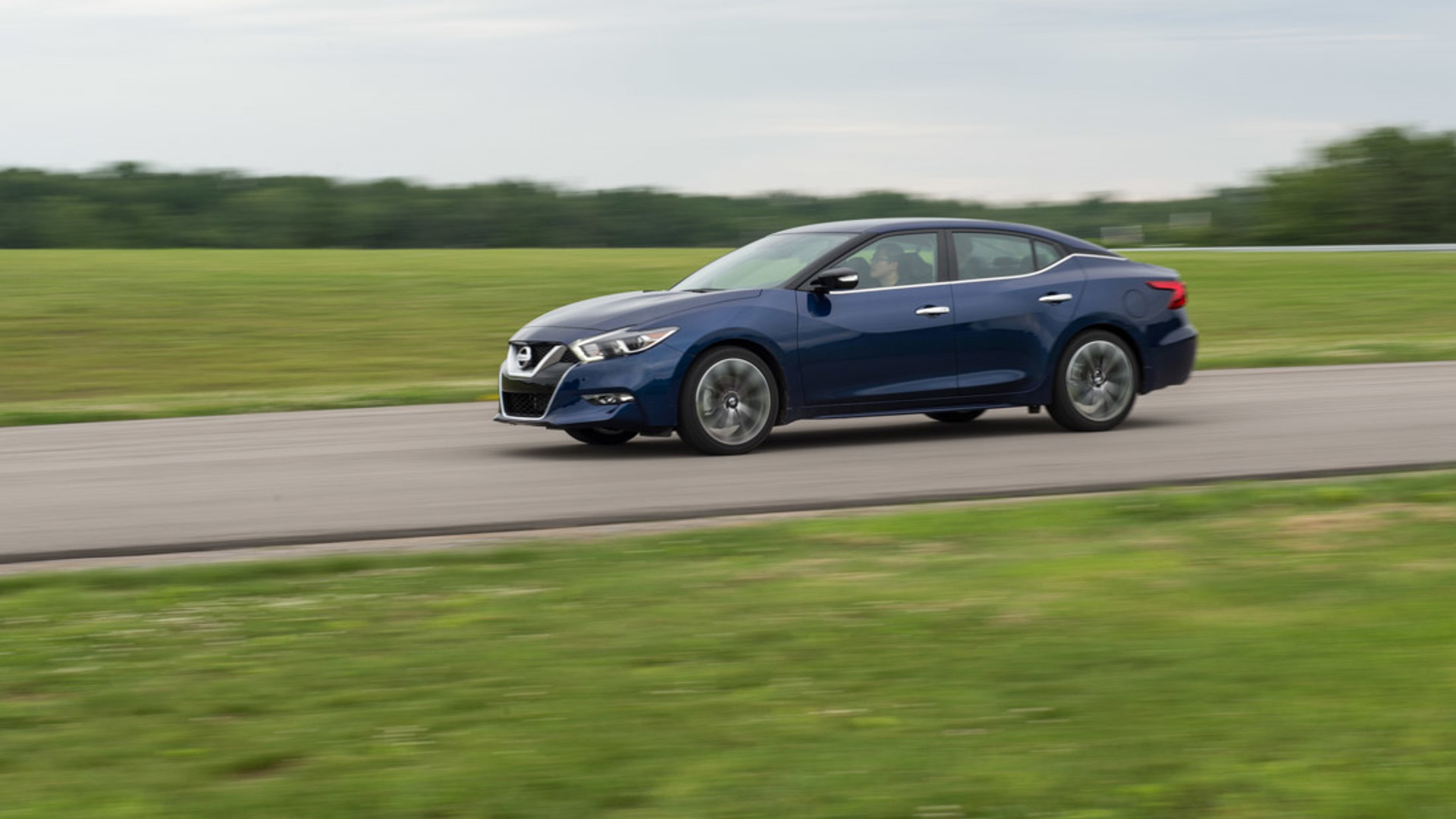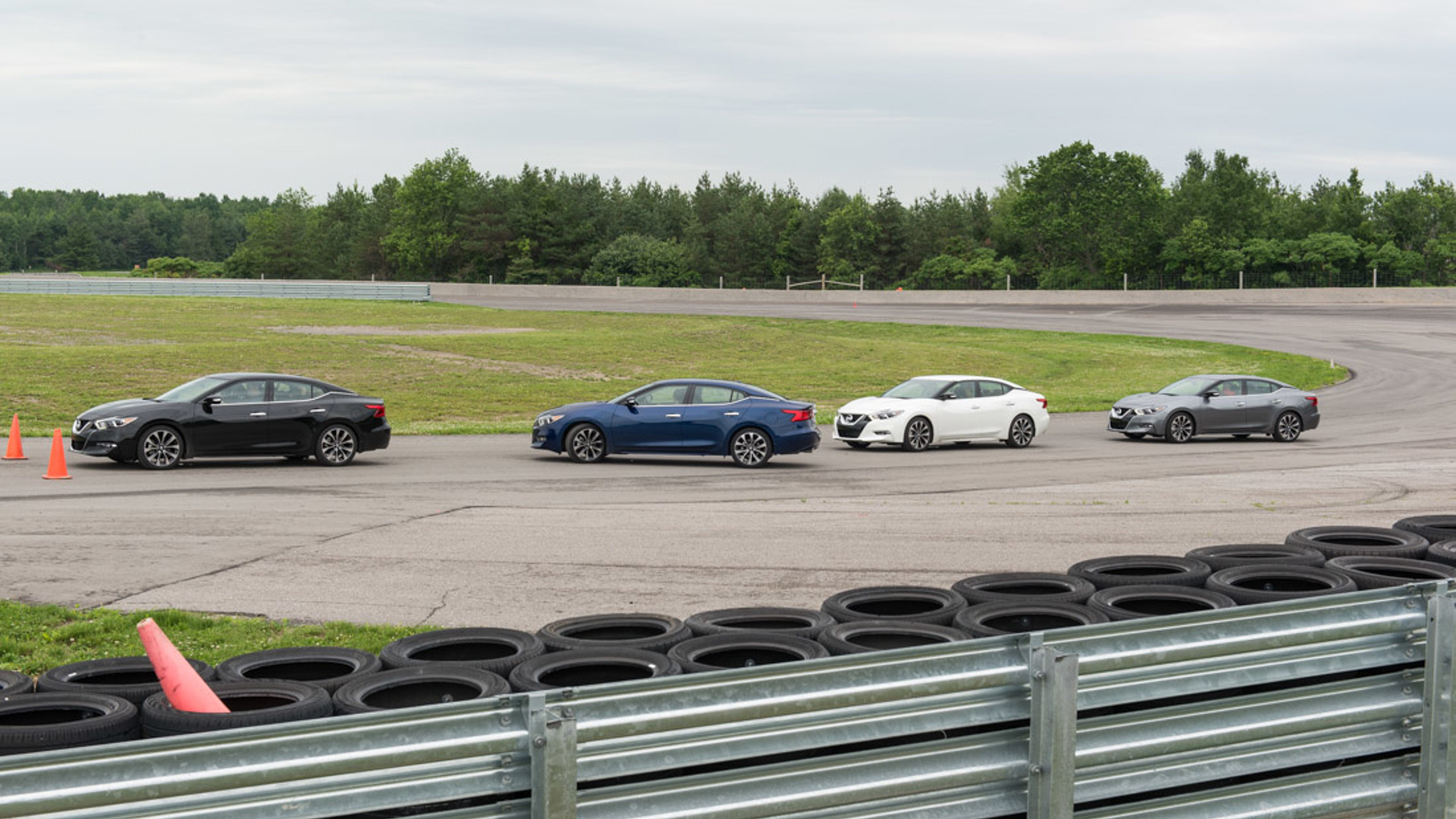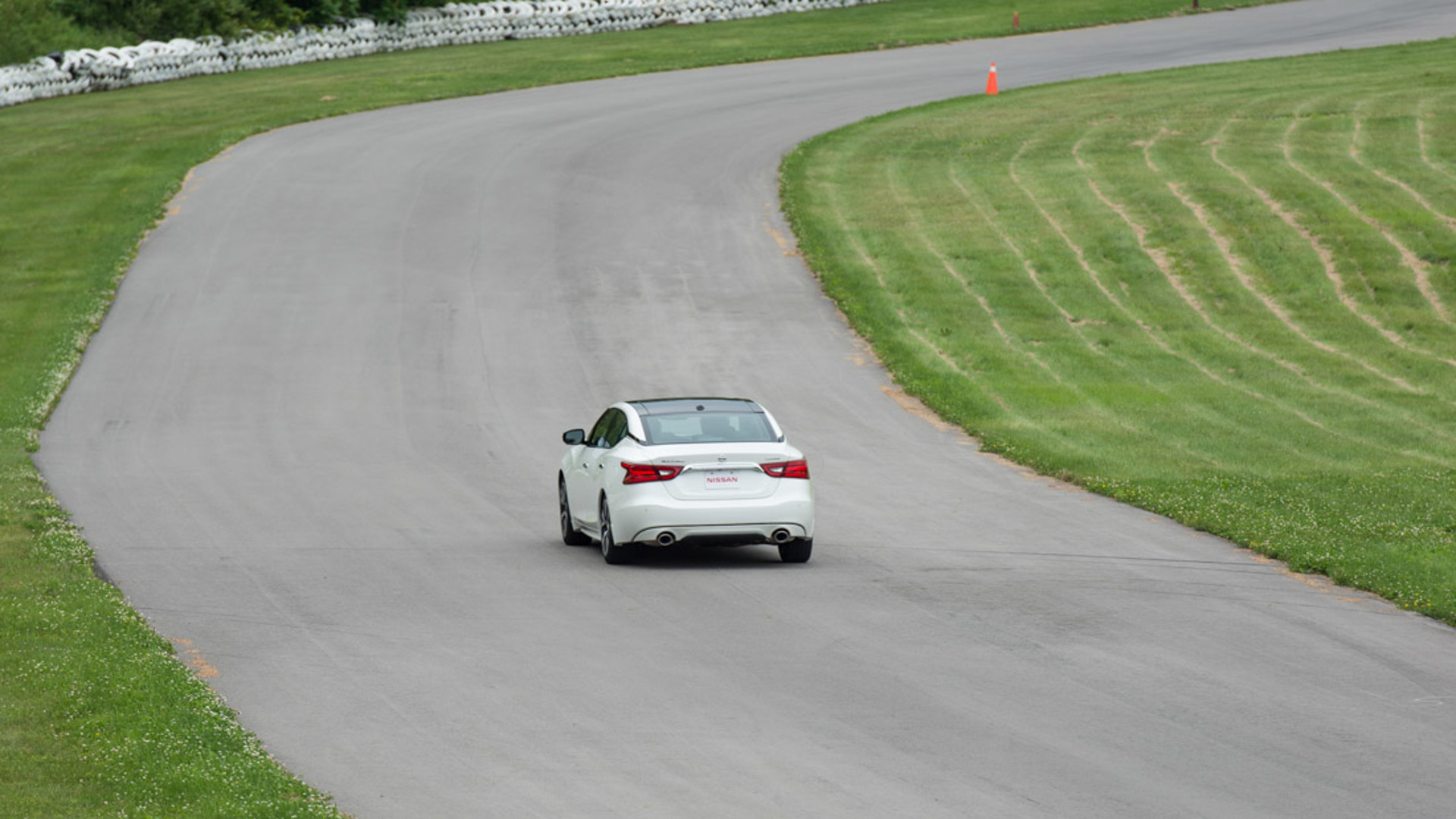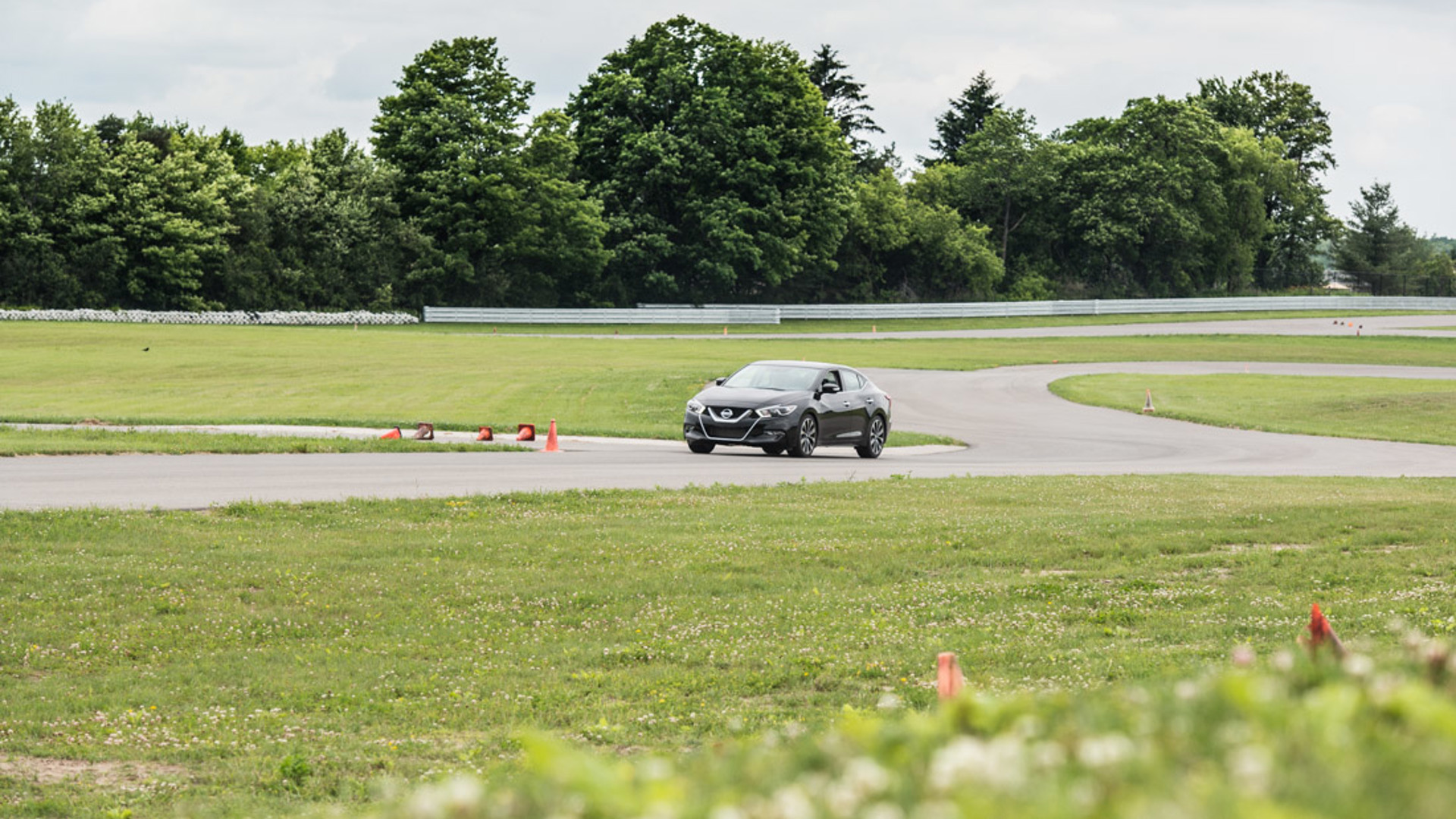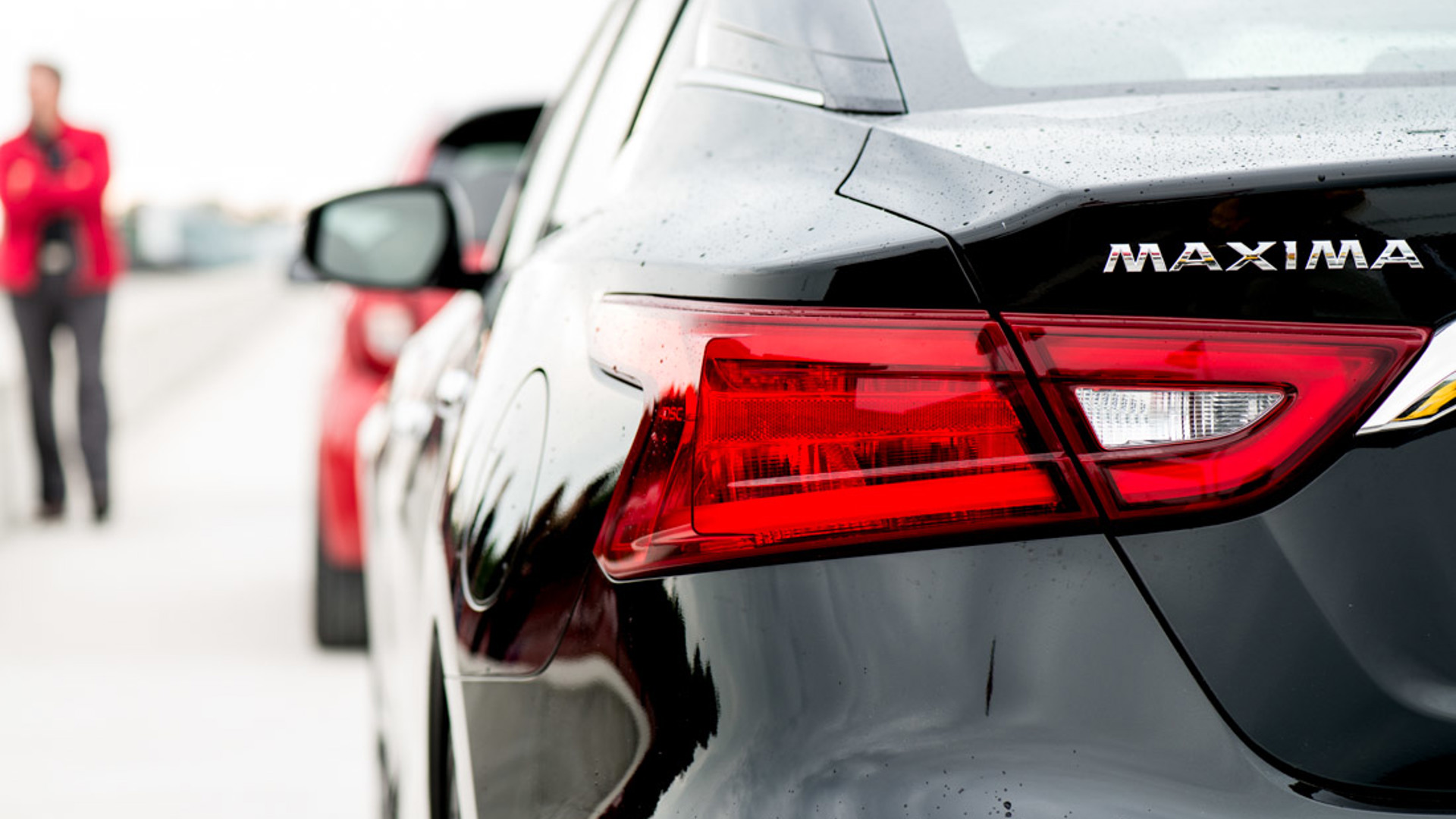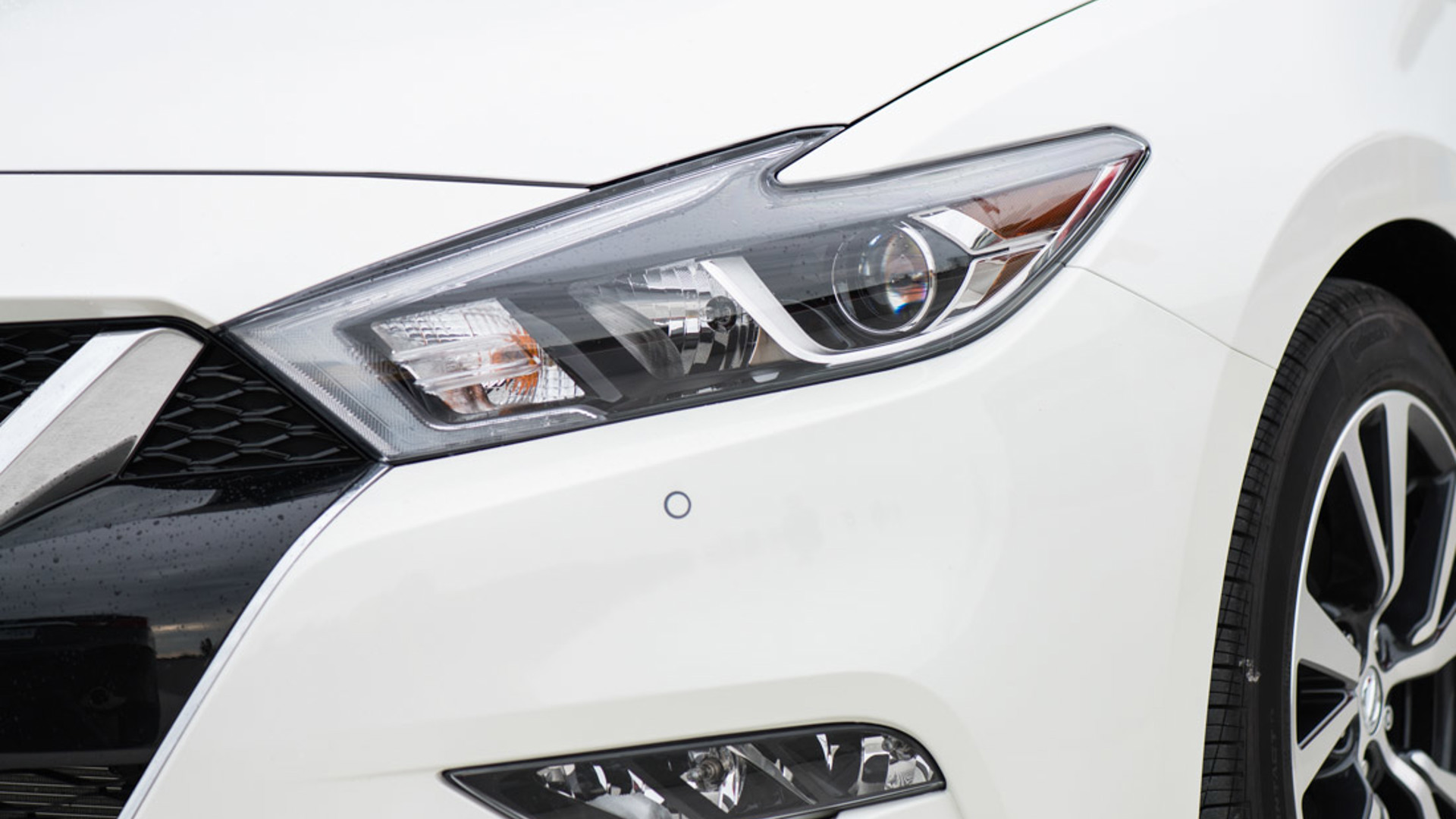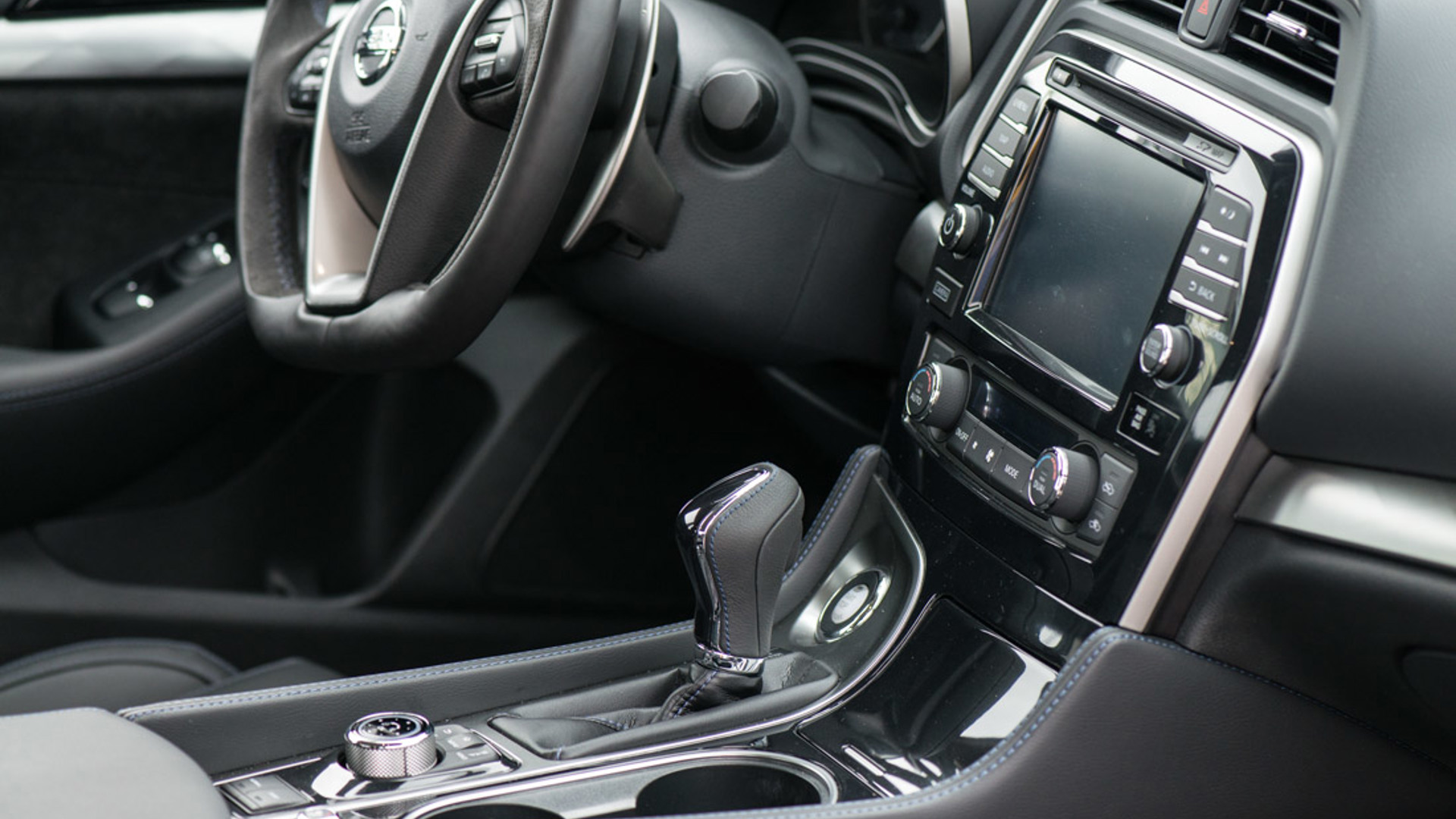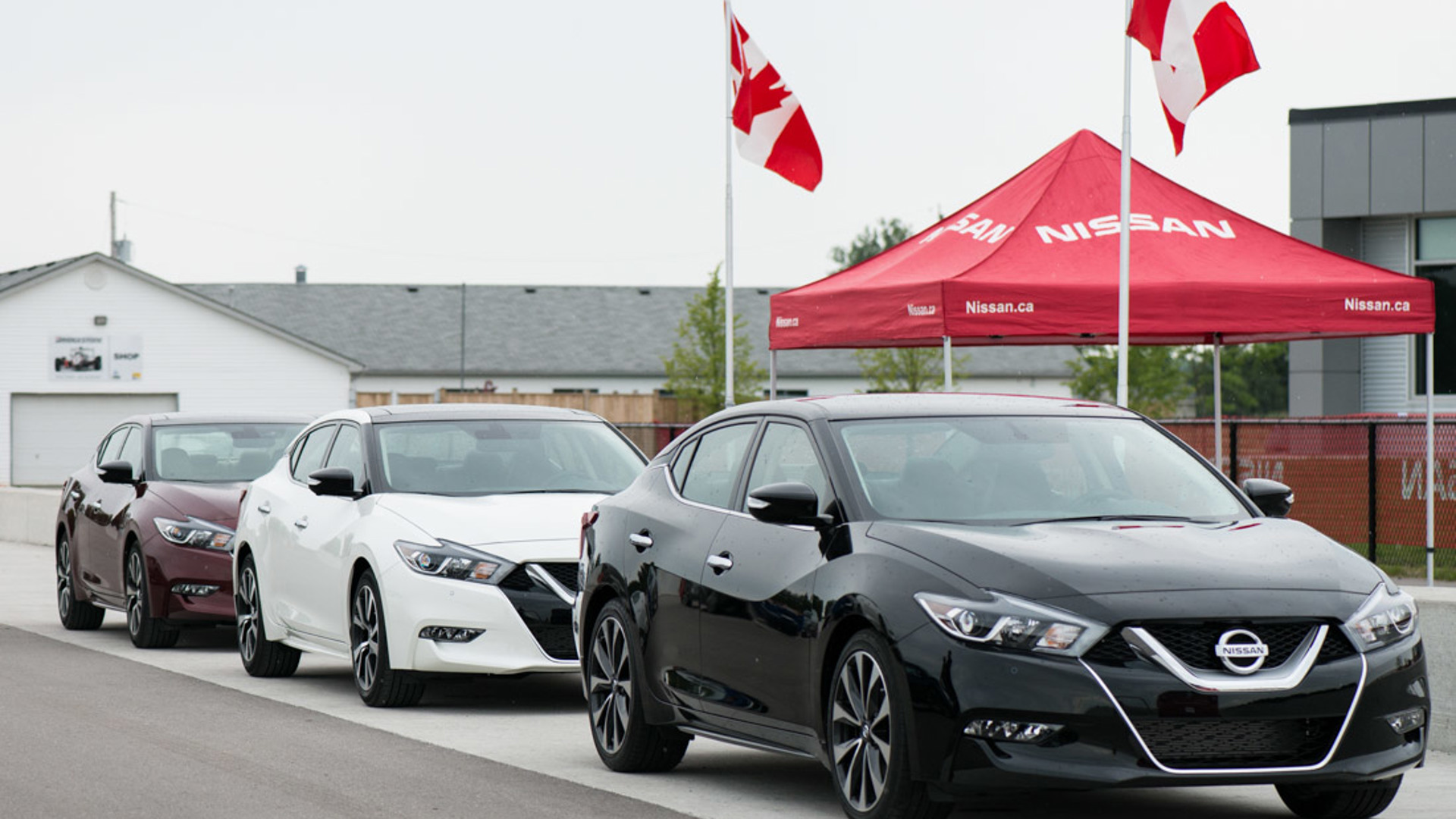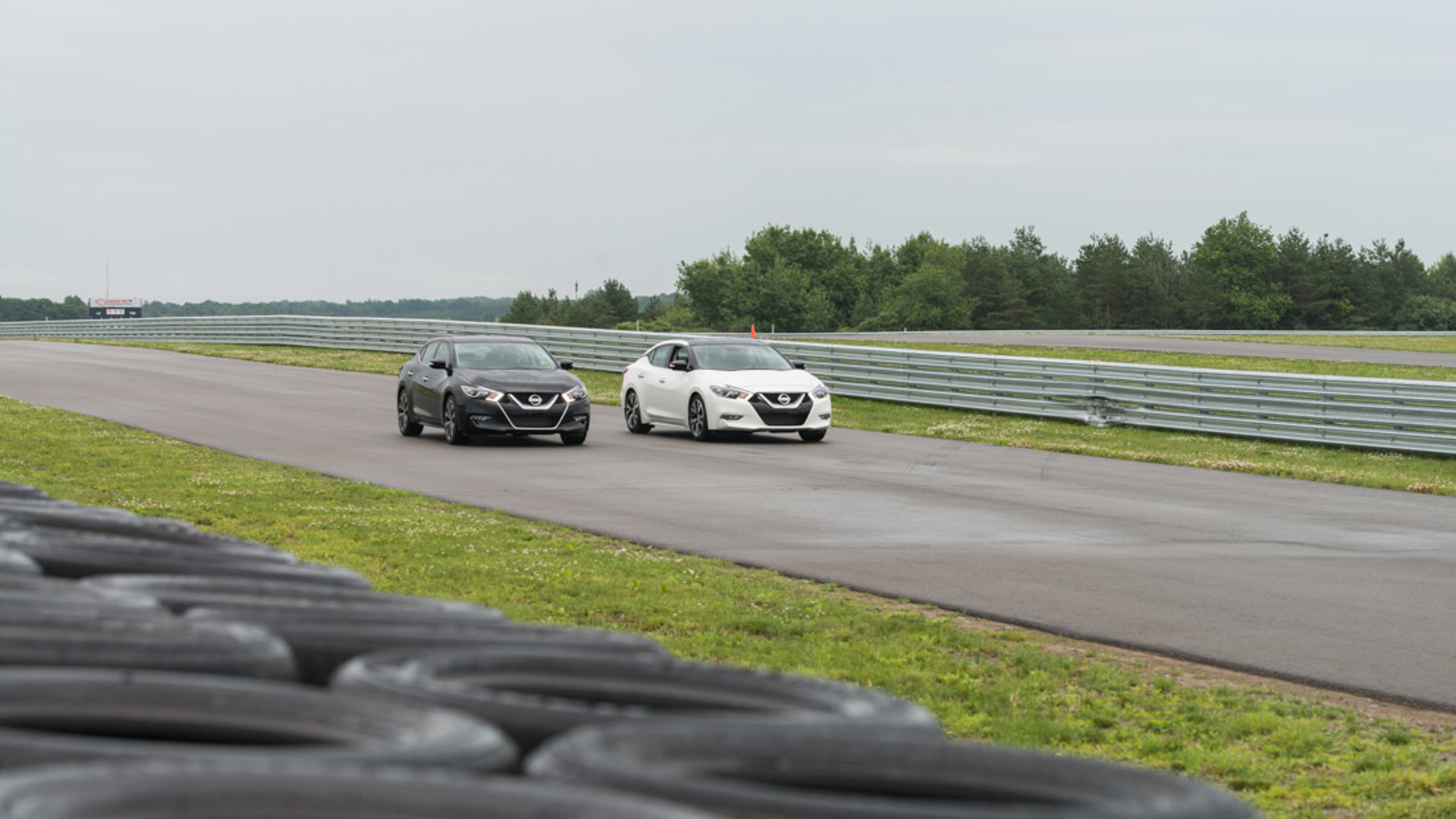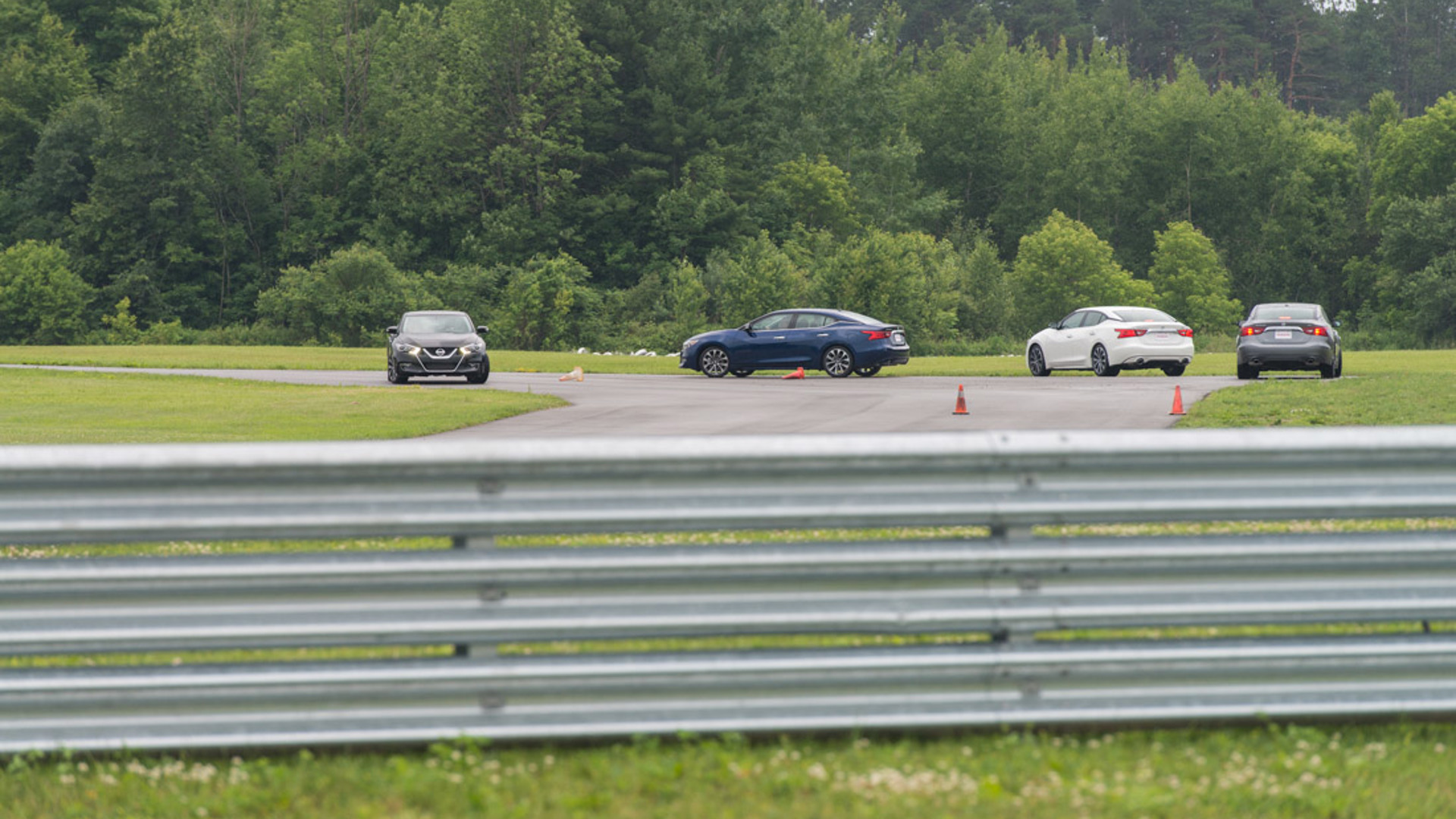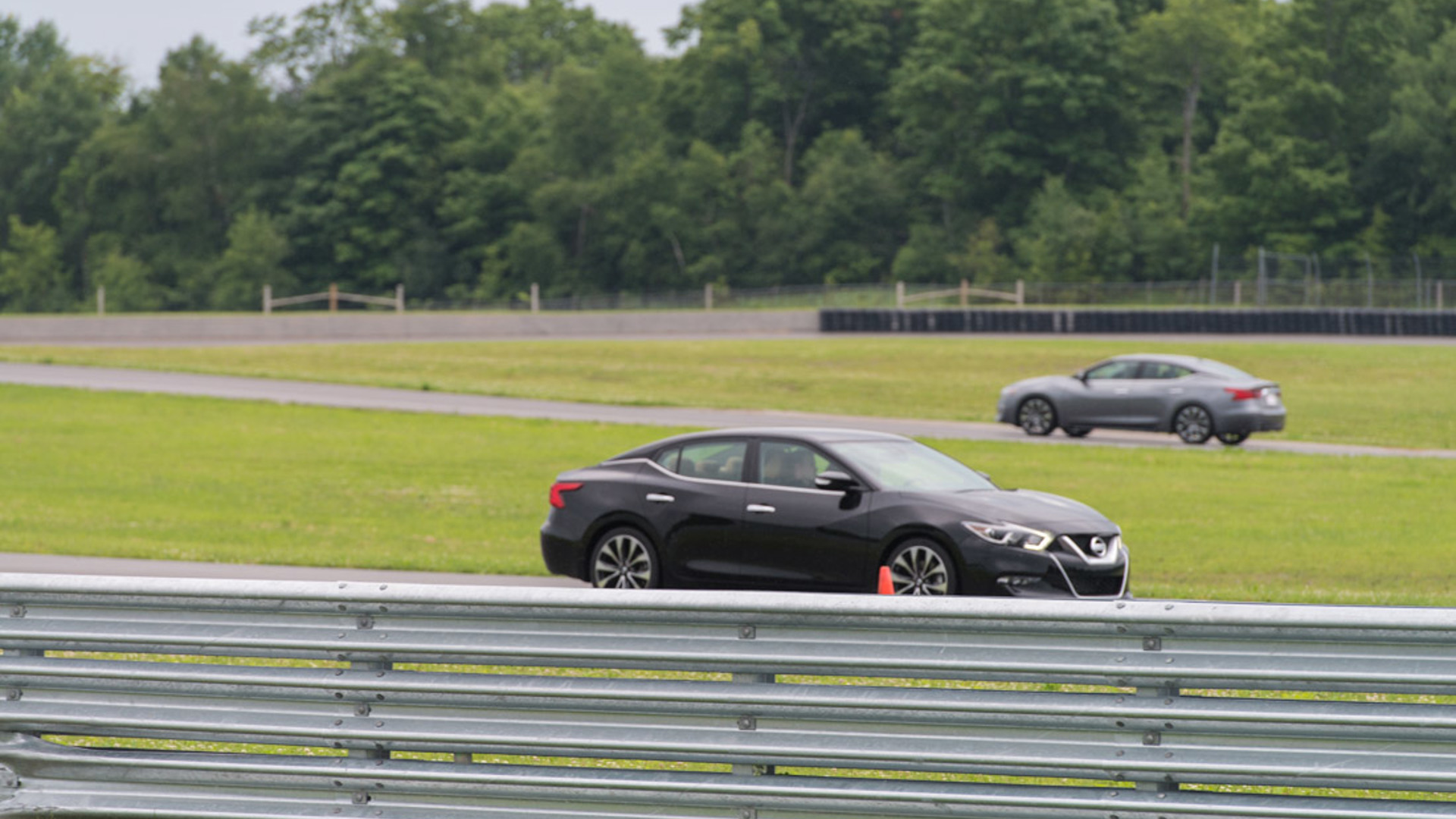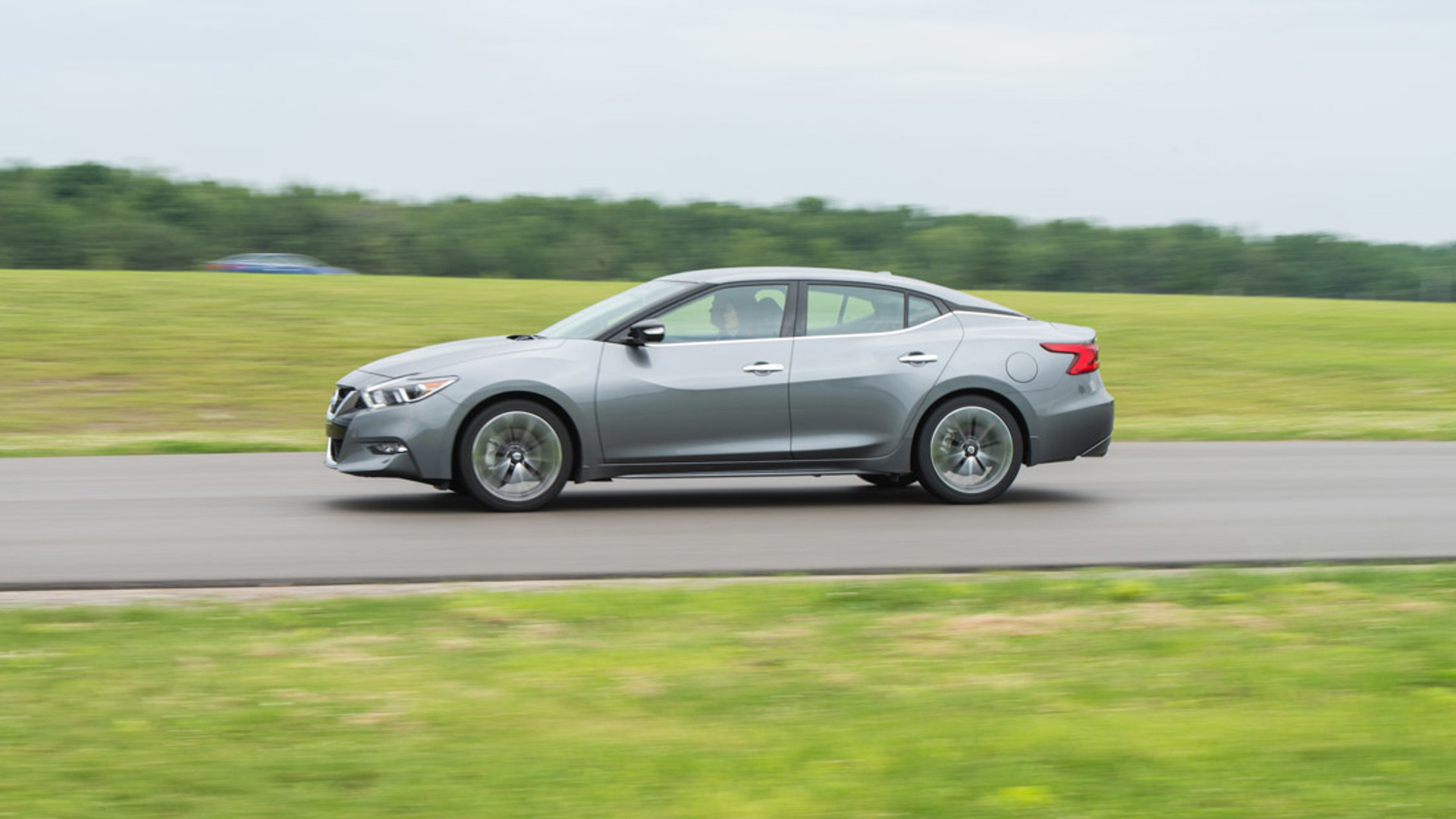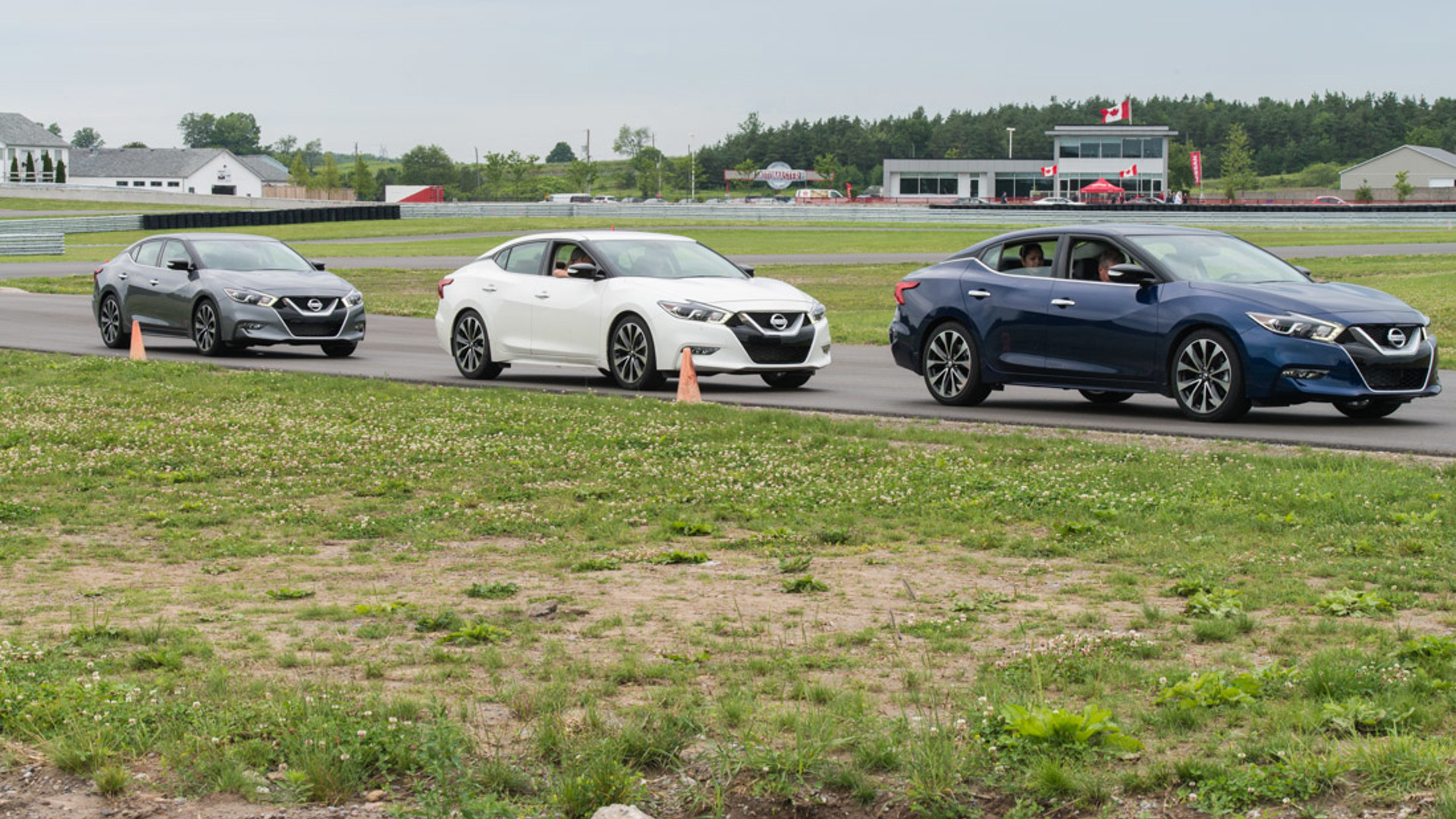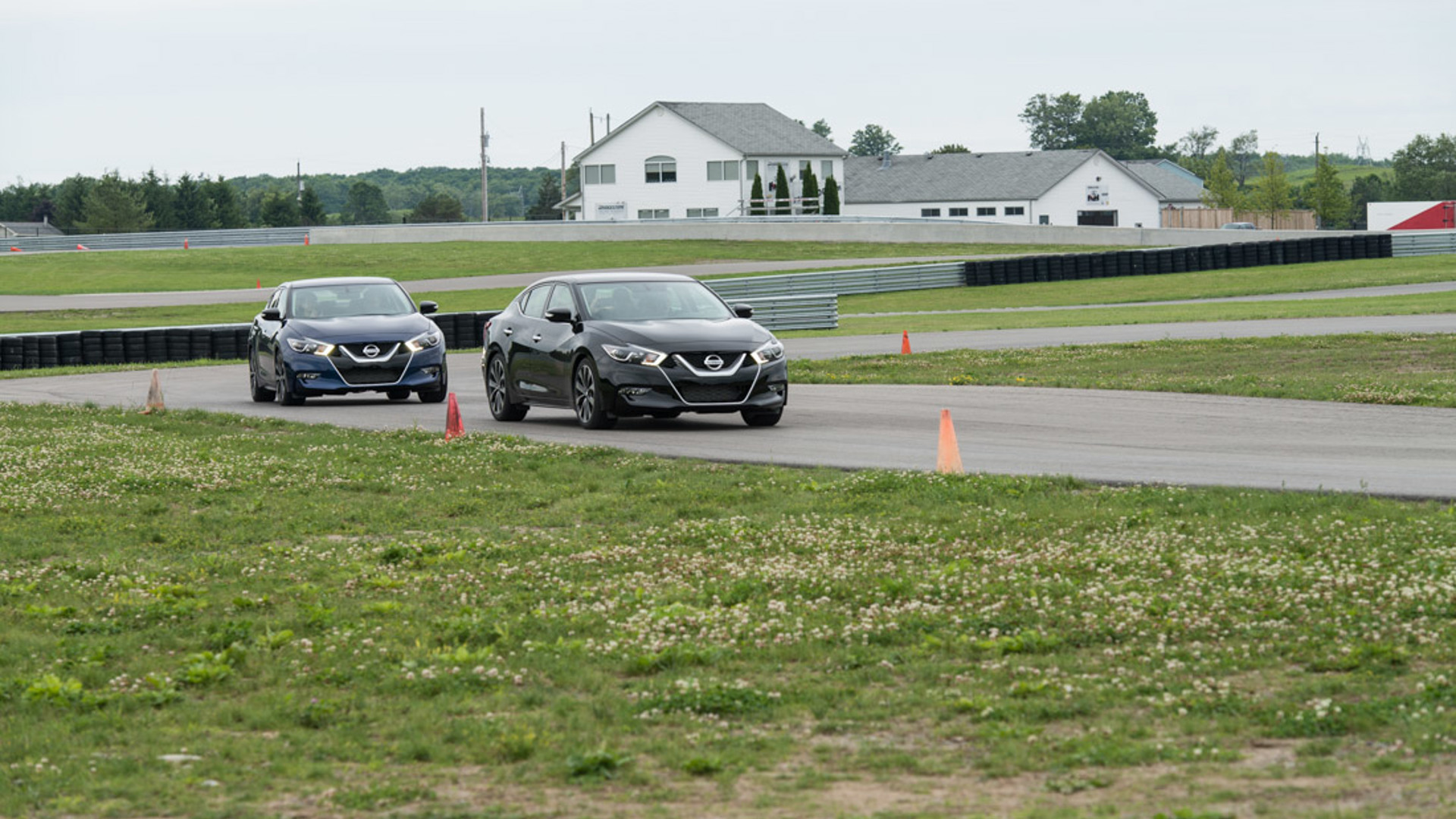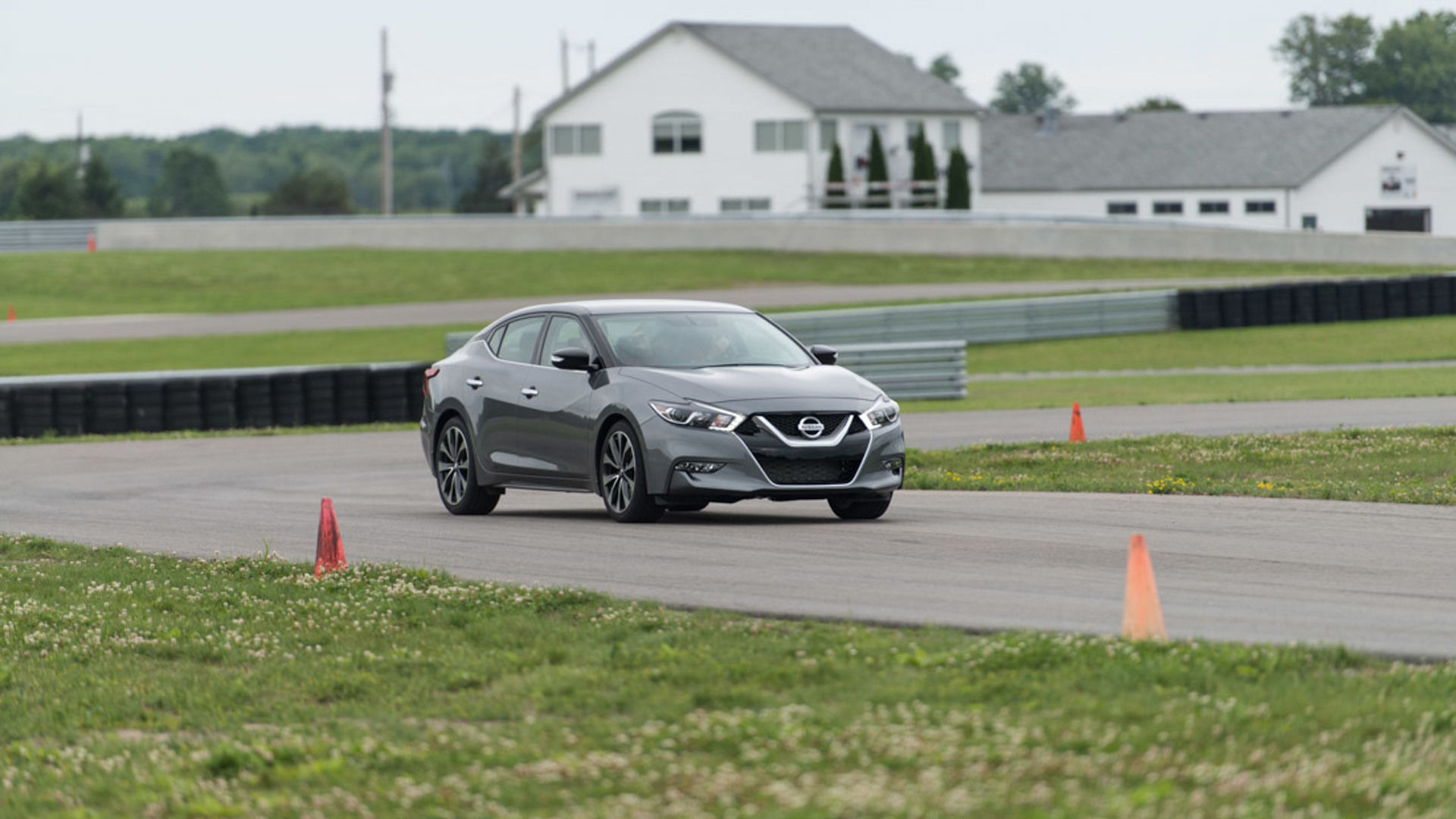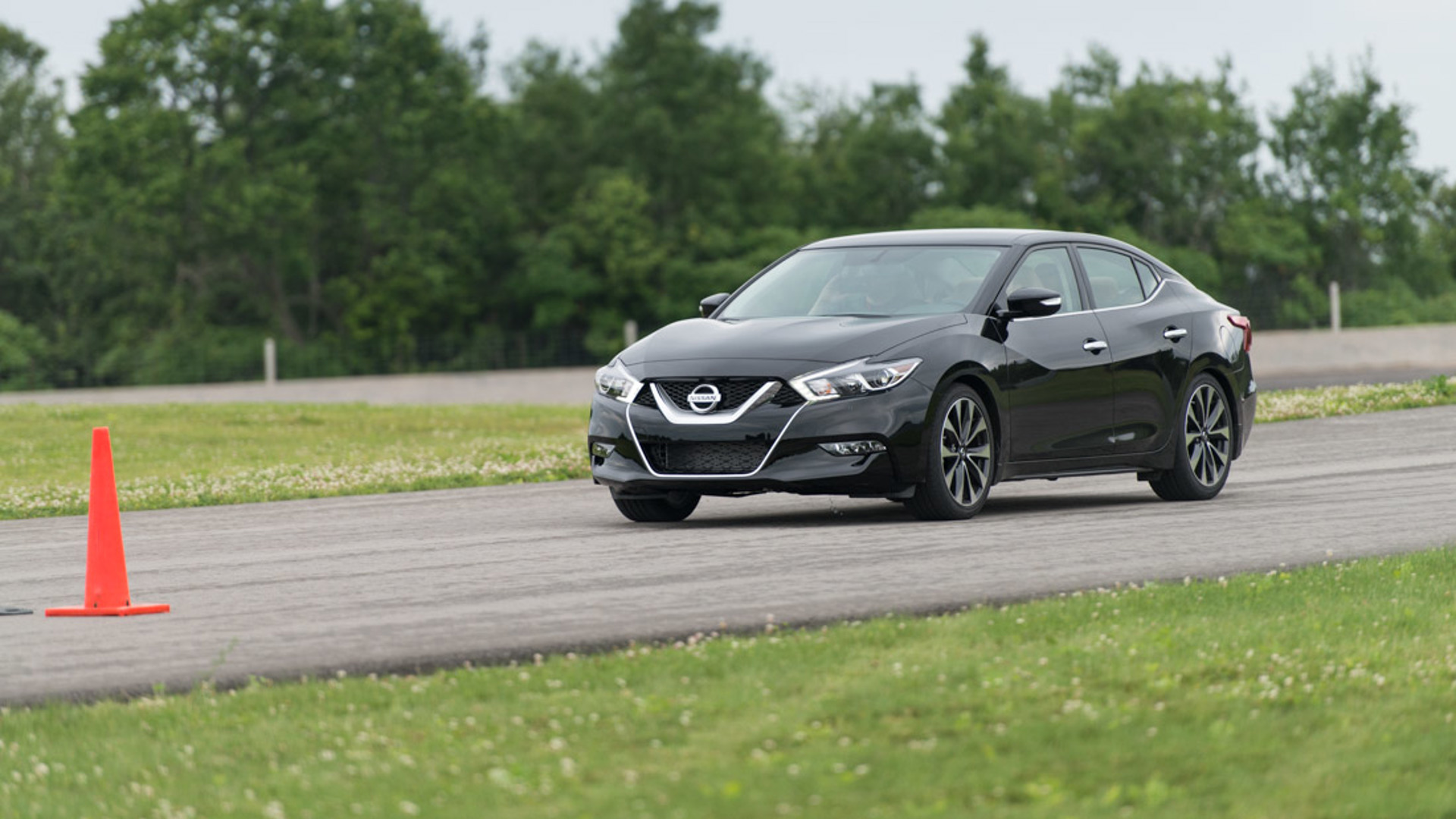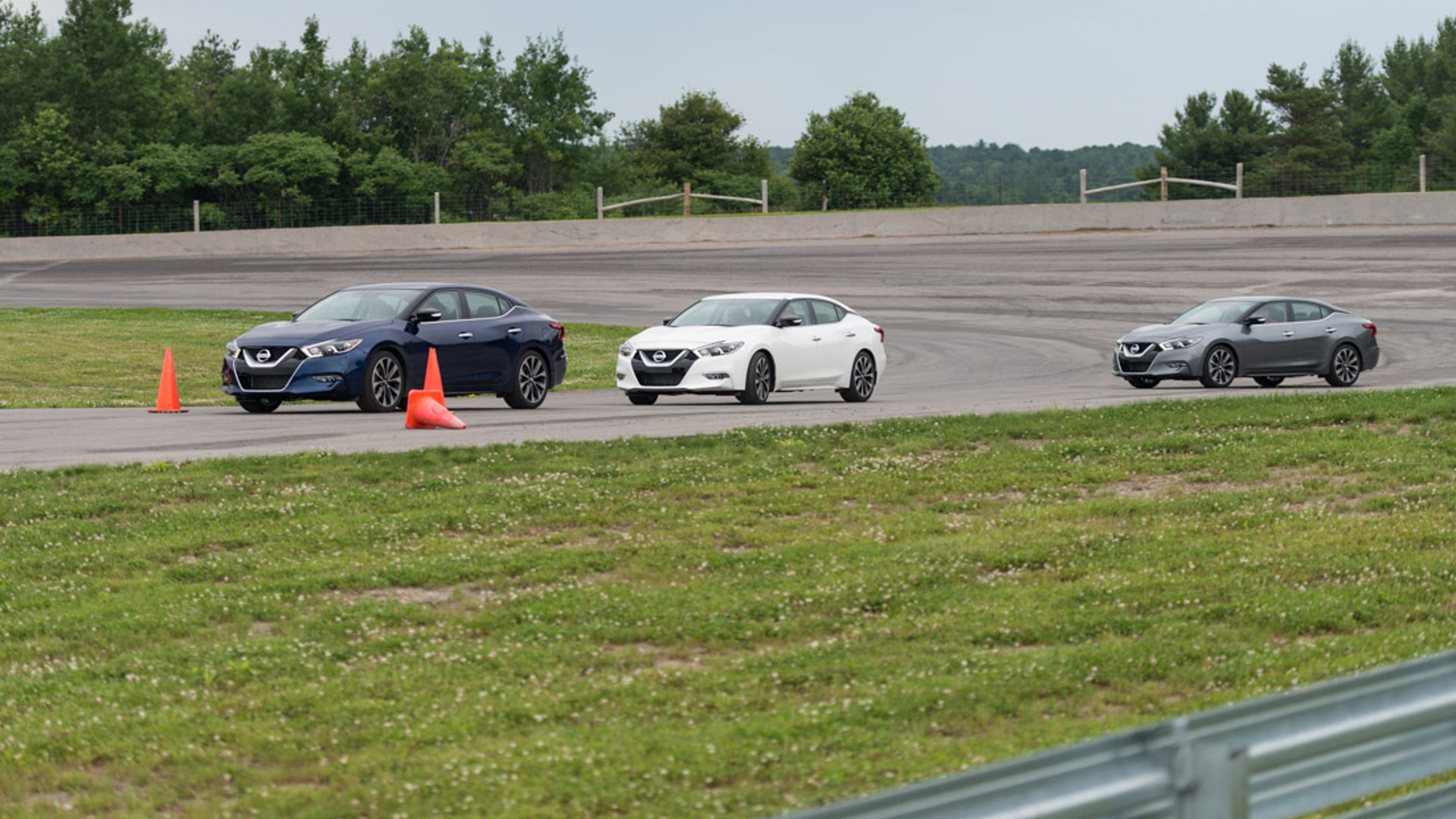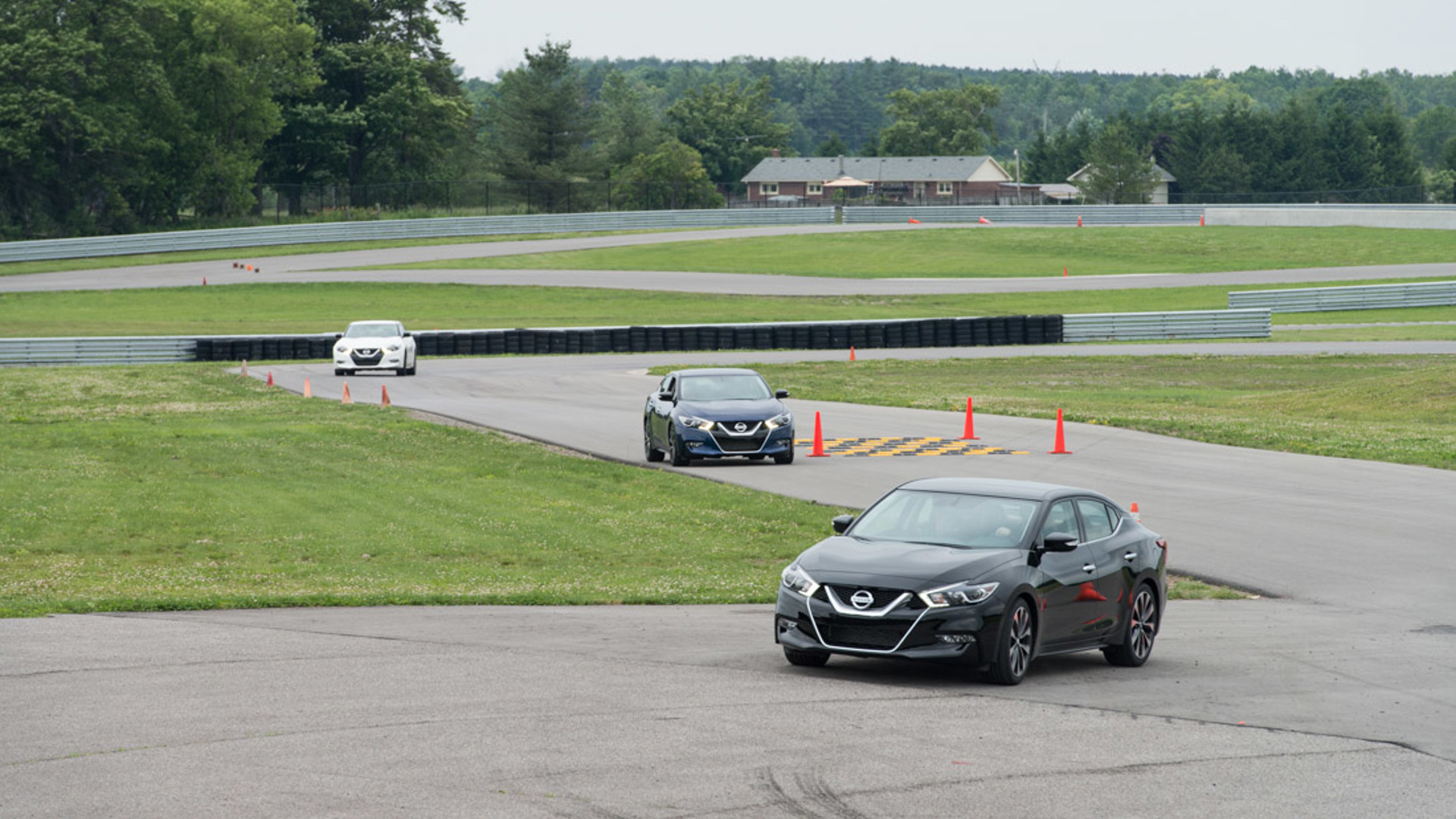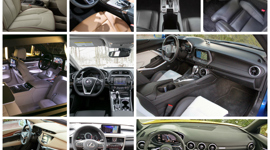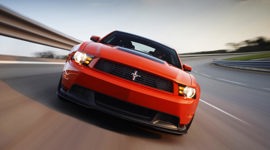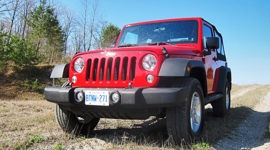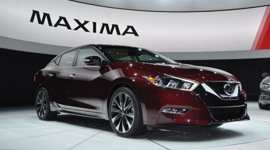Article by Jacob Black, photos by Jacob Black and courtesy of Nissan Canada
Crashing a car used to be easy. You could drive into the back of someone, reverse out of your bay into someone, cut someone off changing lanes – the possibilities were endless! Gradually, carmakers have built in technologies that take away our excuses for crashing into people, and generally, make it easier to keep our cars and bodies scrape-free.
Of course, if you can’t find an easy way to crash into another car you can always just go through a corner too quickly. That’s a sure-fire way to explore the crumple-zone performance of your chosen ride. Right? Wrong.
Back in the early nineties, Nissan’s Maxima had something of a sporty reputation. The V6 that powered the front wheels was a hot rod amongst its contemporaries and the car was marketed as a “Four-Door Sports Car”.
In modern acronym-speak, four-door sports car translates to “4DSC” – which is why that logo is embossed inside the headlight surrounds on the 2016 edition. To justify a return to that marketing claim Nissan hangs its hat on the active torque vectoring system which helps rotate the Maxima through corners. It’s not really a return to the “4DSC” days, but the torque vectoring tech does make it harder to crash the Maxima.
In order to really test it, and in order to make sure that our concerted efforts to stack it didn’t result in collateral damage, dismembered limbs or damage to public property, Nissan gave us the opportunity to try and bin their rigs on a racetrack.
Here are all the reasons I couldn’t successfully damage their cars:
Reason 1: Adaptive cruise control with full stop
Sometimes you’re in traffic. It’s tedious and boring and your mind wanders. Unbeknownst to you someone has decided to park their broken-down piece of junk in the fast lane over the next crest instead of rolling it to the side like an actual human being.
This is usually the time you spear into the back of the fast-stopping car in front of you due to inattention, tailgating, or just plain bad luck. Not so here. The adaptive cruise control not only has you following at a reasonable distance, but reacts on time to bring you to a complete stop. Adaptive cruise control won’t protect you from the bloke behind you though – so keep your eyes on that mirror.
Reason 1a: Forward Emergency Braking
The Maxima is also equipped with an optional Forward Emergency Braking system – this system will warn you just before you careen into the back of someone even if you are not using adaptive cruise control, apply harder force if you’re not standing on the pedal sufficiently and can even begin to brake for you to mitigate the force of impact.
FEB will even look through (under, really) the car in front and monitor the one ahead of it, too.
The autonomous braking aspect of the setup doesn’t guarantee preventing a crash, merely soften it, but the visual and audible warnings sent out before the crash should give you ample opportunity to avoid one in the first place.
Personally, I had a Pavlovian response and mashed the brake as soon as I saw the flashing orange warning light in the dash…
Reason 2: Around View Parking Camera
Historically, my favourite way to anger the owner of whatever car I was driving that time (or parked near me) has been to grind, scrape or bang it against nearby objects while parking. Curb rash on the rims is ubiquitous, just look closely next time you’re in your local shopping centre parking lot – but Nissan is ruining our fun here as well.
How? With a neat little split-screen back-up camera that gives you choice of camera angles and even a top-down, 360-degree image of the car.
Reason 3: Active Ride Control
In my intro I neglected one cause of crashes… spilling a hot coffee in your lap and then hitting a tree. Active Ride Control limits the likelihood of such a thing happening by smoothing out large bumps. Suspension smoothing out bumps is not unusual or difficult – it’s what it does – but Nissan’s system is clever.
Their engineers figured out that when you brake, your suspension compresses a little and that slows down damping – it’s one reason you should clear the brake pedal before hitting a driveway curb or a speed bump. By braking just a tiny, tiny amount immediately after going over a bump, Active Ride Control smooths out the return “bounce” and keeps the car more stable. We tried it over a set of bumps stacked close together, one pass on, one pass off, and found it made a dramatic difference in the stability and ride comfort of the Maxima.
Reason 4: Active Trace Control
This is arguably the coolest bit of tech that Nissan has packed into the new Maxima. Yes, it’s sporty, but the wide, steeply raked A-pillars and poor visibility plus the heft inherent in a large sedan kind of scuttle the whole “sports car” thing. The value of Active Trace Control is therefore not that it makes the car go faster through corners – though it does – it’s that it stops you understeering into the fence like a noob.
How do I know? I was aiming at the fence.
Okay, I’m exaggerating slightly – the car will still hit a fence if you try hard enough – but if you just happen to overcook a corner a little out on a country drive, the Active Trace Control does a remarkable job of dragging you back into line.
It does this by braking the inside rear wheel; the whole feeling is artificial and a little disconcerting at first but you can feel the car twisting itself back towards the corner and out of understeer. With the system on I couldn’t make the car understeer off the road no matter how I tried. Then I turned it off and voila! I was in the weeds!
Seriously though….
Is Nissan the only company doing this stuff? Of course not. But they do have a very well executed system in a well-priced package. The rise of automated driver assistance systems like this is happening partly because they’re the building blocks slowly falling into place that will one day allow autonomous vehicles or partially autonomous vehicles to roam our roads. Whether or not you like that concept it’s fair to say that we all enjoy the prospect of less crashes.
These technologies can never completely protect you or your fellow road users from inattentive, unsafe or just plain bad driving, but they can and do help mitigate the risks of the road just that little bit. Now if only insurance premiums would reflect that….
